What’s the difference between a home sewist and sewing professional? How do you take your sewing to the next level to turn your homemades into couture pieces? Want to know the behind the scenes of being a pattern designer for a big 4 company? All this and more in this interview with Kathryn Brenne when we met in London – teacher, writer, pattern designer for Vogue, the list goes on. Enjoy, enjoy, enjoy!
What’s your sewing story Kathryn?
I’ve been sewing since I was 7. My high school in the 70s was very progressive and I had a very inspiring teacher. After basic sewing, I learnt knits, tailoring, daywear, upholstery, and also got industry experience. I spent time with a tailor, time in a shirt manufacturing factory, with a fashion buyer for catalogue shopping.
By the time I was 15 I knew I wanted to go into fashion, so I went to Ryersons in Toronto and majored in fashion design. Ryersons teaches you to work in industry. You sew with industrial machines and techniques like setting in jacket sleeves without pins. In my last year I specialised in tailoring for men.
Early entrepreneur days
I was raised to have the confidence to say “I can do that” and I’ve always had a business. After graduation I started making tailored menswear suiting but also womenswear and activewear. Once I made a downhill skiing racing outfit for someone who brought fabric back from Europe. Did you know – given the speeds they travel downhill, if there is a hole in the fabric they end up blowing up like a balloon! I also worked 4-8.30 Monday to Thursday in a government job in the evening so that I was able to design and sew during the day.
After I got married and moved out of Toronto to North Bay, I decided to teach sewing as well and applied to be a night school teacher. But there were no openings as Rose, who was in her 60s, taught every night of the week! They suggested I run a self-improvement class to get my foot in the teaching door, so I designed a class and young women would come to learn makeup, hair, walk, modelling, and I’d get them little gigs in fashion show. This was the in the 80s – probably call it “finishing class” now.
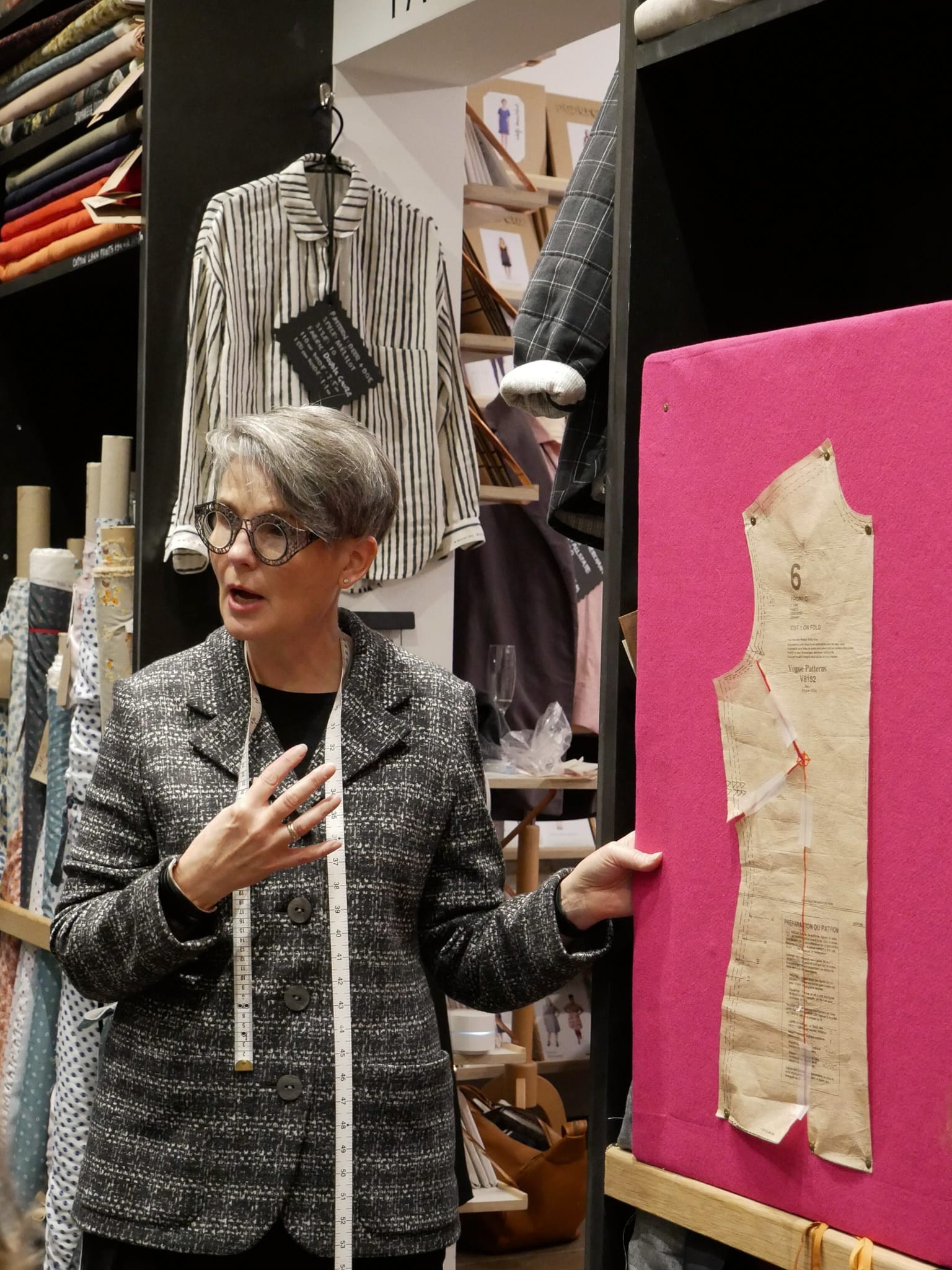
Teaching and writing in the 1990s
After that, I taught sewing at a college part-time and also in a quilting shop (smocking, cross stitch). In the 90s I started writing. I heard that the Threads magazine editor was coming to Toronto, so I signed up for his class so I could show him my work. That paid off, and I started working with Threads. Later on, I was scouted by Vogue for a few articles. Over time I’ve written for all the big publications – Sewing Today, Consumers Digest, Sew News. I carried on with the bespoke sewing as well, and in 2000 I decided to open a sewing school.
Life as a Vogue pattern designer
I can put anything through a sewing machine and my designs are varied – I can do funky skirts, pretty dress, pants. Part of my inspiration comes from travelling, and I also get a lot of mailings for trend and style. Once a year I present Vogue with sketch ideas (technical drawings) and they decide what they want. Everything is swatched, sometimes I do storyboards to give additional context and feeling. Occasionally they will ask me for something, e.g. accessories design. Most of the time I have way too many ideas so they keep a hold file on me.
Once they decide, I drape the garments (except pants, which are flat pattern drafted). If I’m making a new pattern, it takes me 2 weeks to make the design, the sample, figure out the sewing techniques. Then I provide a size 10 model garment for a 6” tall model. This is the height of model used in their photography. The final pattern for the consumer is 5’5”.
As it takes about one year for something to be released, it’s up to me to decipher what trends are going to last. Remember the bare shoulders trend? I didn’t think it would last, so I didn’t propose anything to do with them. Also, I have to know what the Vogue customer wants to wear. She’s older than the other brands but wants high-end styles. McCalls is the youngest, and Butterick for those your age (Kate: I’m 35).
Your best selling pattern?
V9268 has been reprinted a few times. At any given time there are 520 times in the whole Vogue collection. Every new release is in a bundle of 40 patterns, and at the same time, the bottom selling 40 are taken off sale. Mine are usually in the top 10 so they are good sellers. The colours of the envelope are important. If you have a sample in all black it won’t sell well, because you can’t see it.
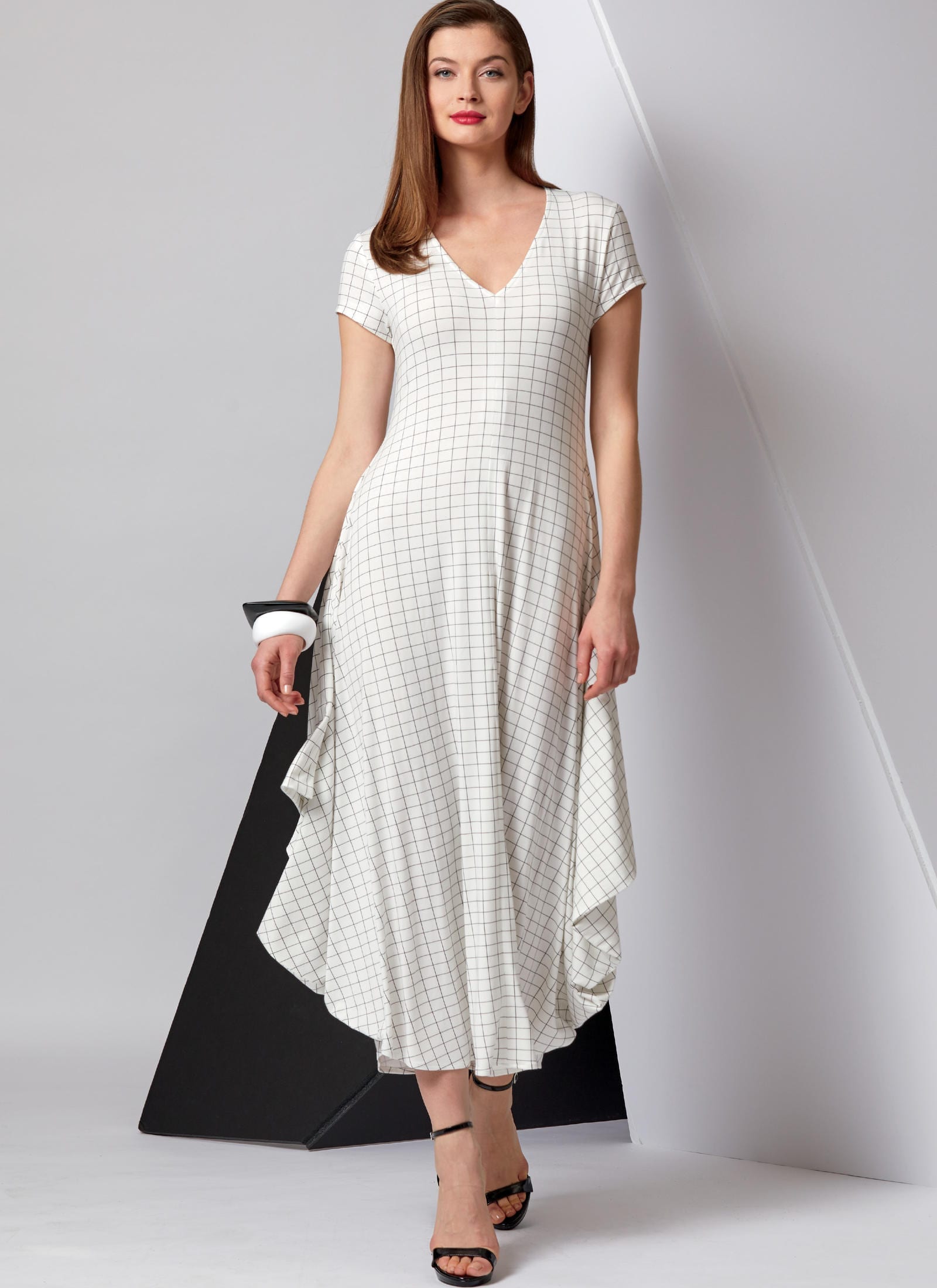
Should we all learn to pattern draft?
When I first opened my sewing school, a lot of people said they wanted pattern drafting classes. But what I came to realise was that most people don’t actually want to draw their own designs – they just want clothes that fit! I’ve been sewing >50 years and fitted a ton of bodies in that time, a lot of knowing how to fix problems with fit is down to experience.
The other thing to remember is that drafting is all about mathematical calculations. Using reference points, ratios, being really accurate – you want to be good at math if you want to pattern draft.
What makes a good pattern?
A good pattern leaves minimal room for error. Pieces and notches need to match up, I like to have pattern pieces for everything (I will always have separate pieces for an upper collar and under collar) …. but if you don’t make fit adjustments then you still won’t end up with a good garment.
Slow sewing and sustainability
For the most part, when choosing fabric I like to use natural fibres, but it depends on what I’m making. One bias cut dress I have in polyester and it doesn’t wrinkle so it’s great for travelling. I will buy fabric online without seeing a swatch – if the description and photos are good then I will have a pretty good idea on how the fabric behaves.
Most of my garments take a long time to produce because I always enjoy hand sewing. There is usually a lot of basting involved, depending on how I think the fabric will react.
Silk t-shirt: 3 full working days (20+ hours)
Linen dress: one week, three days to make to do the dress, and a couple extra days to do the embroidery work (pic above)
Jacket: 2 weeks.
Tailored trousers: if the pattern is already figured out and fit sorted, then 2.5 – 3 days.
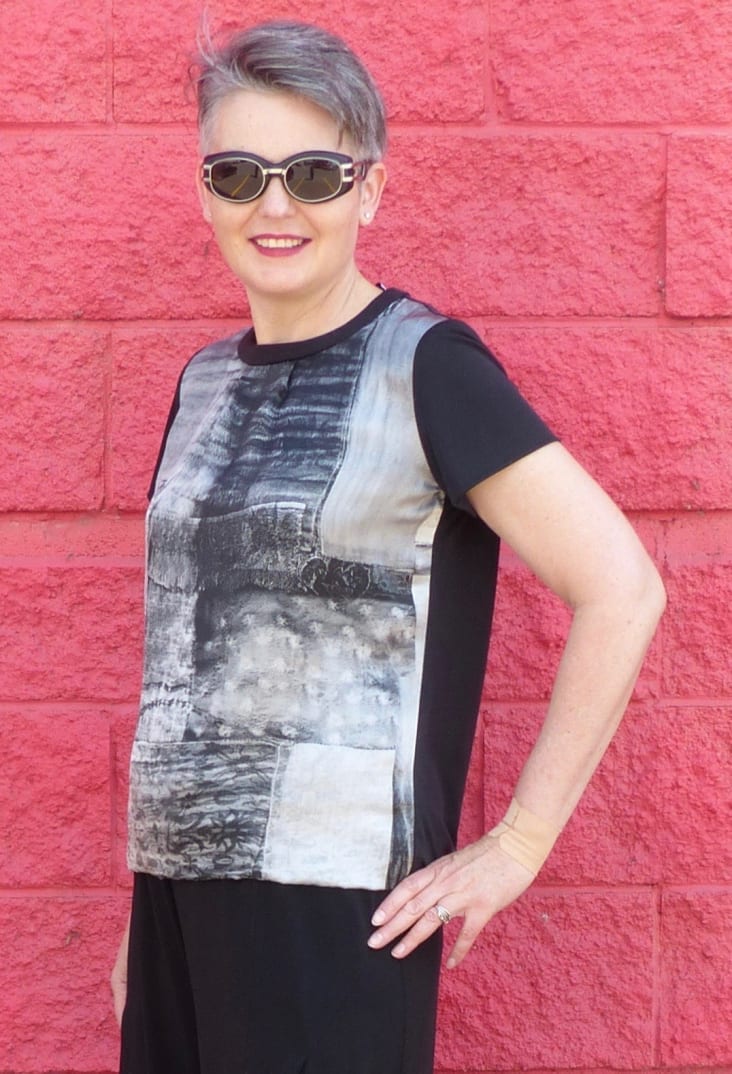
Every year I make a lot of garments, it’s my job. For workshops I teach (sometimes with Jon Moore), for Vogue patterns, for articles. But I keep my pieces for years and years and they are quite timeless. By now my wardrobe is very large and I have a very supportive husband who is happy to keep building more cupboards and a dressing room! Some people shop vintage, I just shop my wardrobe. I still have one coat from when I was at Ryerson’s in 1981. Also, I have 3 daughters so if they will have first dibs if I’m giving things away.
Finally, what do you think is important to be sustainable in our sewing?
Developing sewing skills. Especially for the younger generation like my daughters (who are approaching 30). There’s sewing things up quickly to wear tonight, but it’s good to develop skills so that you can make a coat or other quality garment that will last for many years. Things that can take your sewing to the next level:
- Expand your hand stitching techniques (which you can learn at the couture workshops)
- Baste things together for better accuracy.
- Learn different zipper techniques.
- Learn pressing techniques. Ironing and pressing are two different things – you can take a badly sewn garment and improve the look of it by 200% just by pressing it properly. It can really make a break a garment.
- Experience different fabric and how it behaves.
- Learn how to to build shape into a garment.
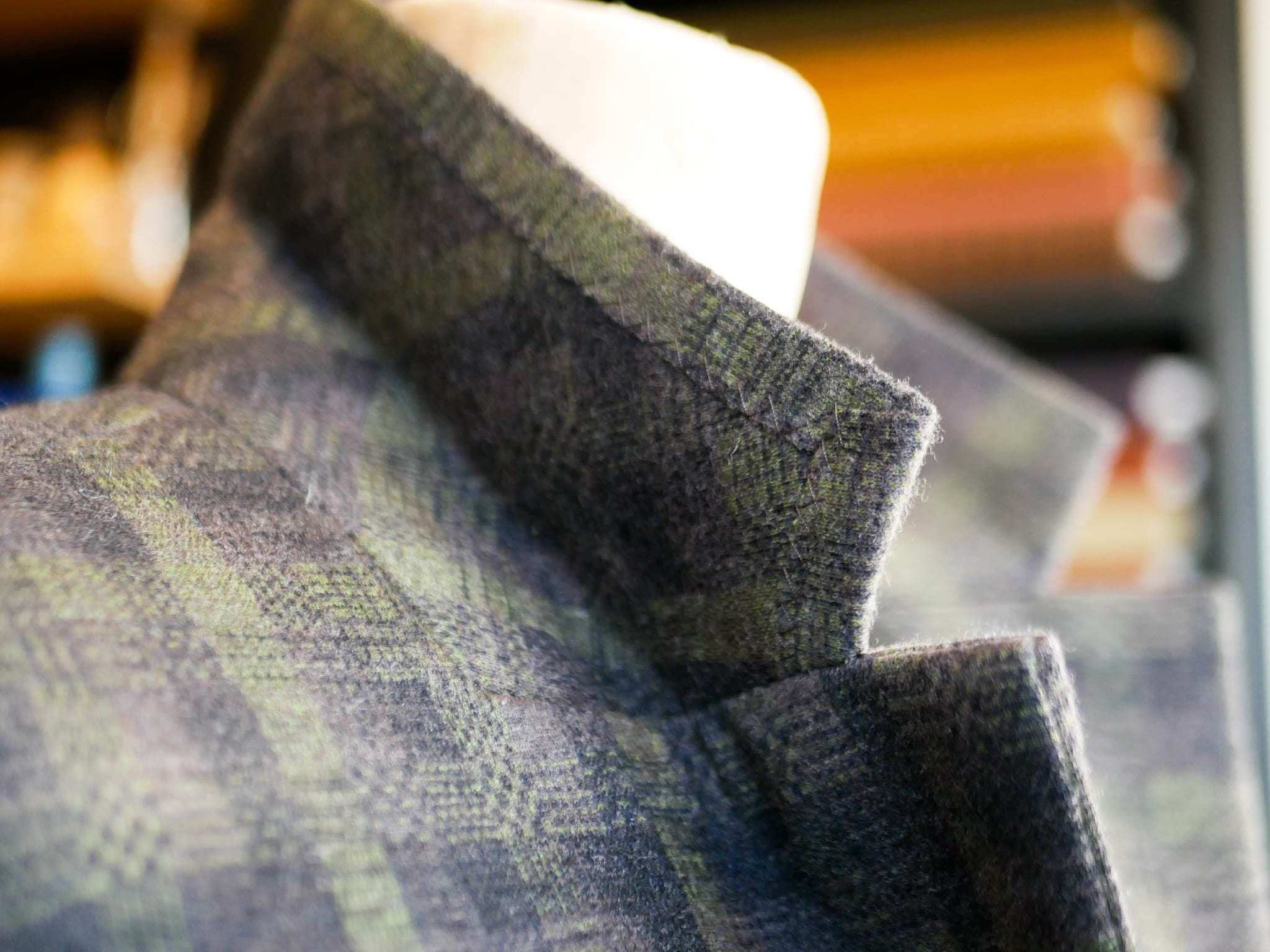
—
Thanks to Kathryn for sharing her story and providing her suggestions of sewing things to learn. I’m certainly feeling inspired to up my sewing game and I hope you are too! If you’re interested in reading more about couture, check out my interview with Jon Moore here.
Till next time
Kate x

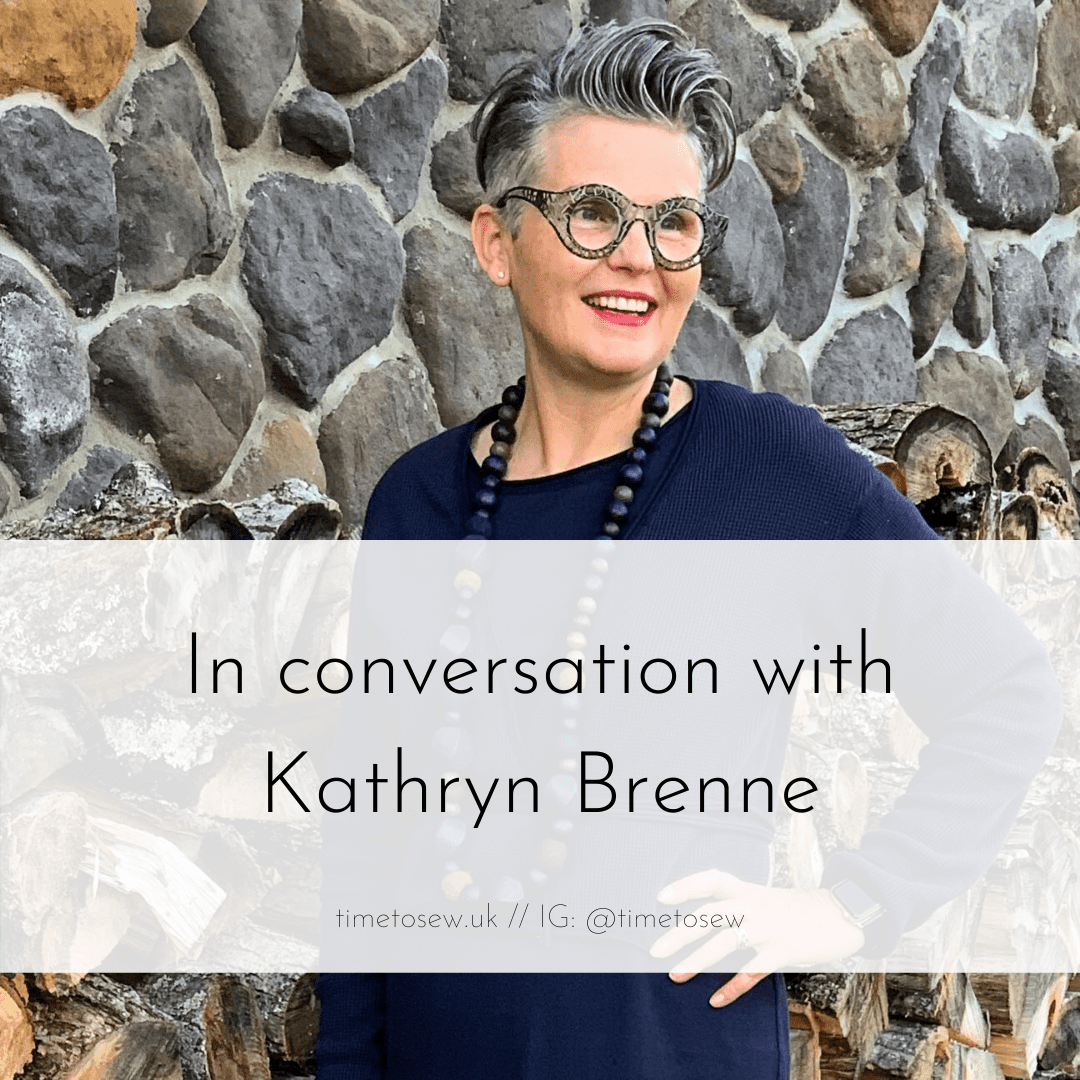
3 comments
I’m so happy to see this interview with Kathryn! I admire her designs and agree that they are classic, with a twist. It’s interesting to have a glimpse into a designer and a sewing professional’s journey and viewpoints. And her comment about the audience/market preference regarding designs from Mccall’s, Butterick and Vogue, I haven’t thought of it before and found it intriguing. I also read from the History of the Paper Pattern Industry book which resonates with Kathryn: it states that McCall’s are contemporary/trendy, Butterick is classic/timeless, and Vogue is high fashion. I sew all of them personally. Thanks for this article Kate!!
I really liked this article, Especially the part about pattern drafting. I have been a home sewer for over 40 years, and I did a pattern drafting course 2 years ago and I started to experiment with my own patterns. But more than anything it gave me such a boost in confidence that I am not afraid now to experiment with parrerns purchased, having to amend for sizing or hacking. It certainly gave me a different perspective of sewing.
Thanks for your comment Karen, and I have ummed and ahhed about the pattern thing for ages then thought forget it. But, reading your comment I can see there would be value for doing alterations etc. so it might be time to invest in a book as a start! Thanks.